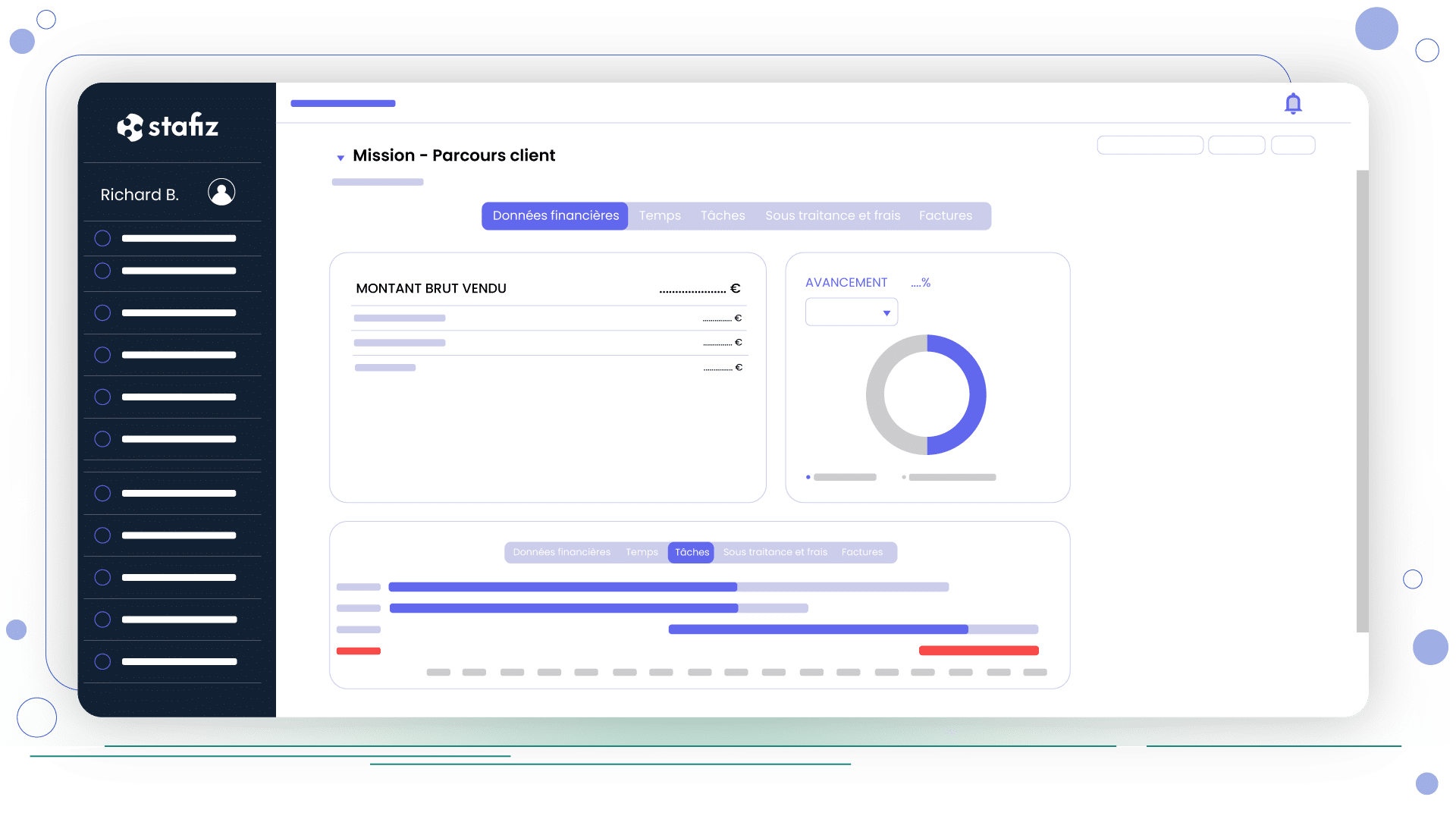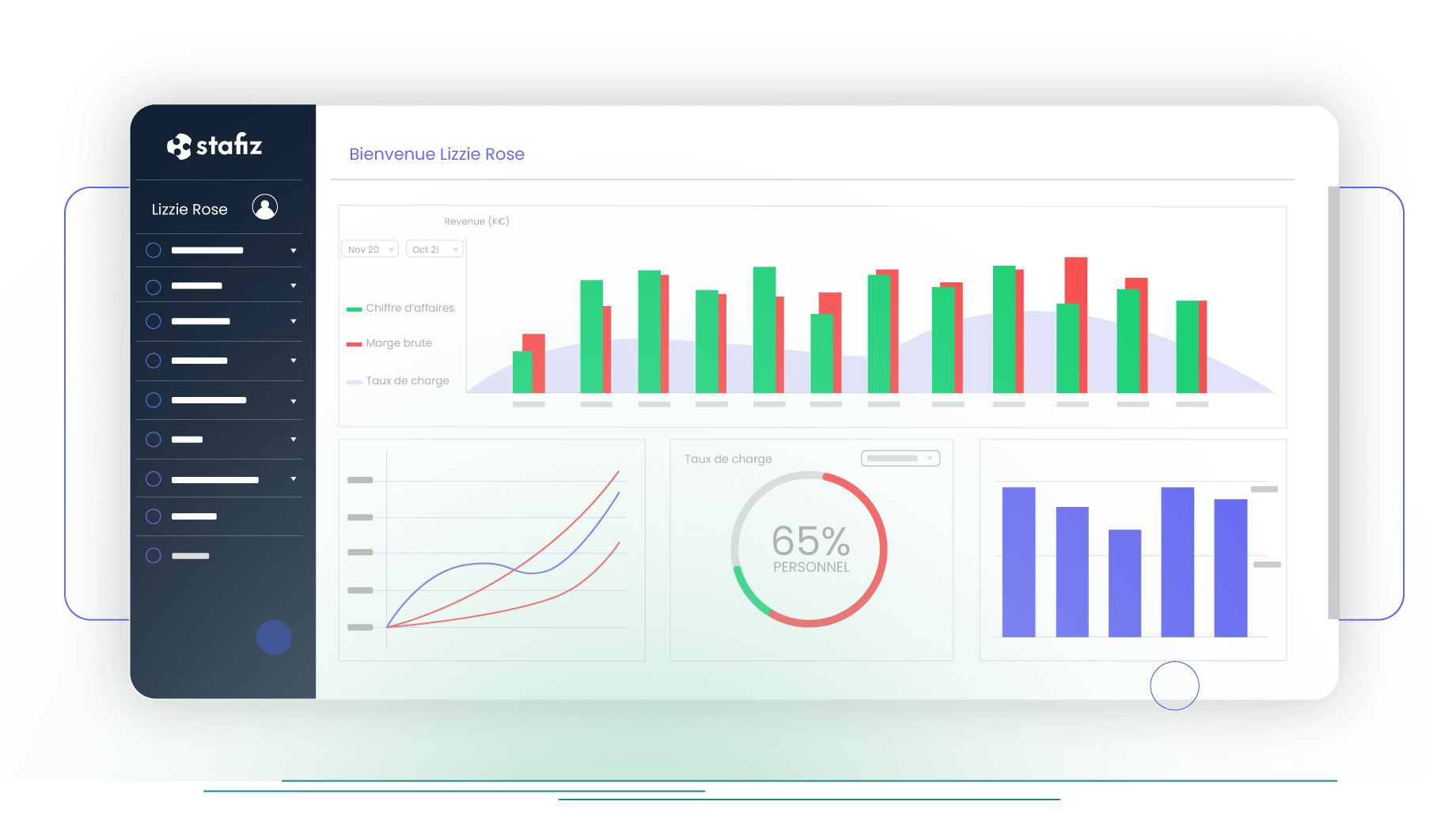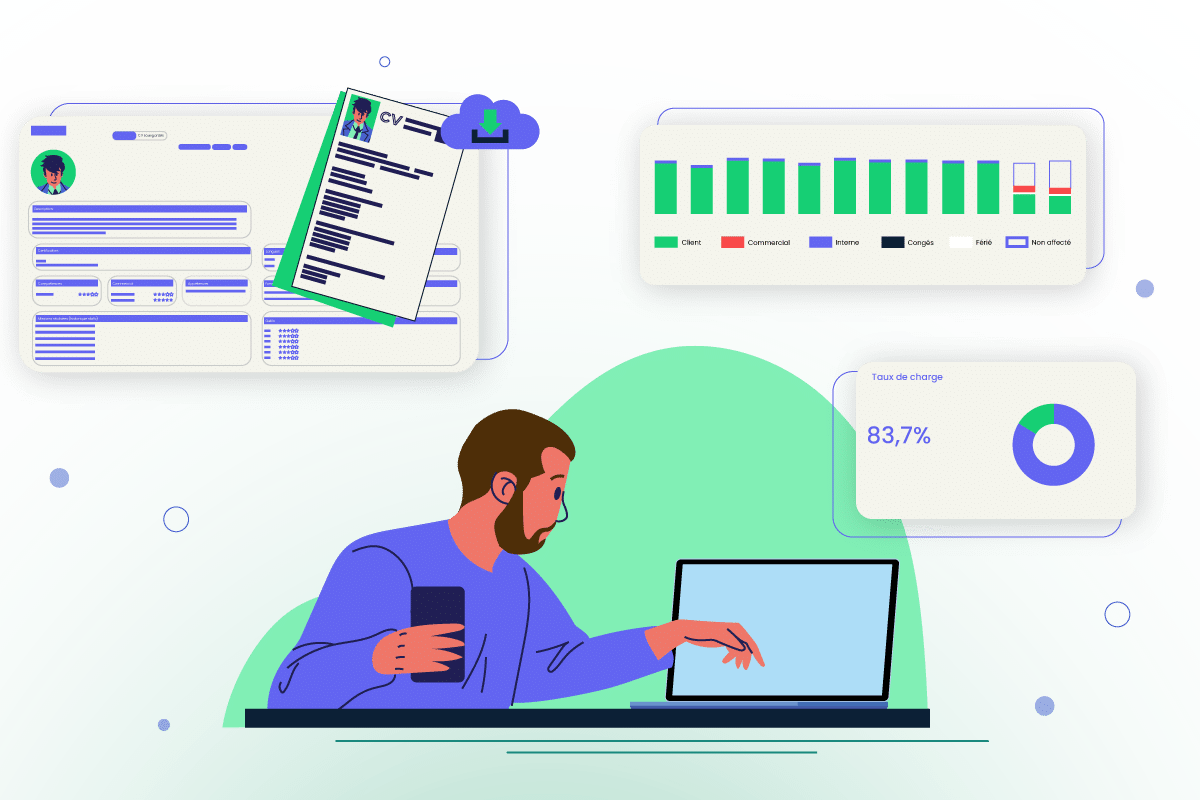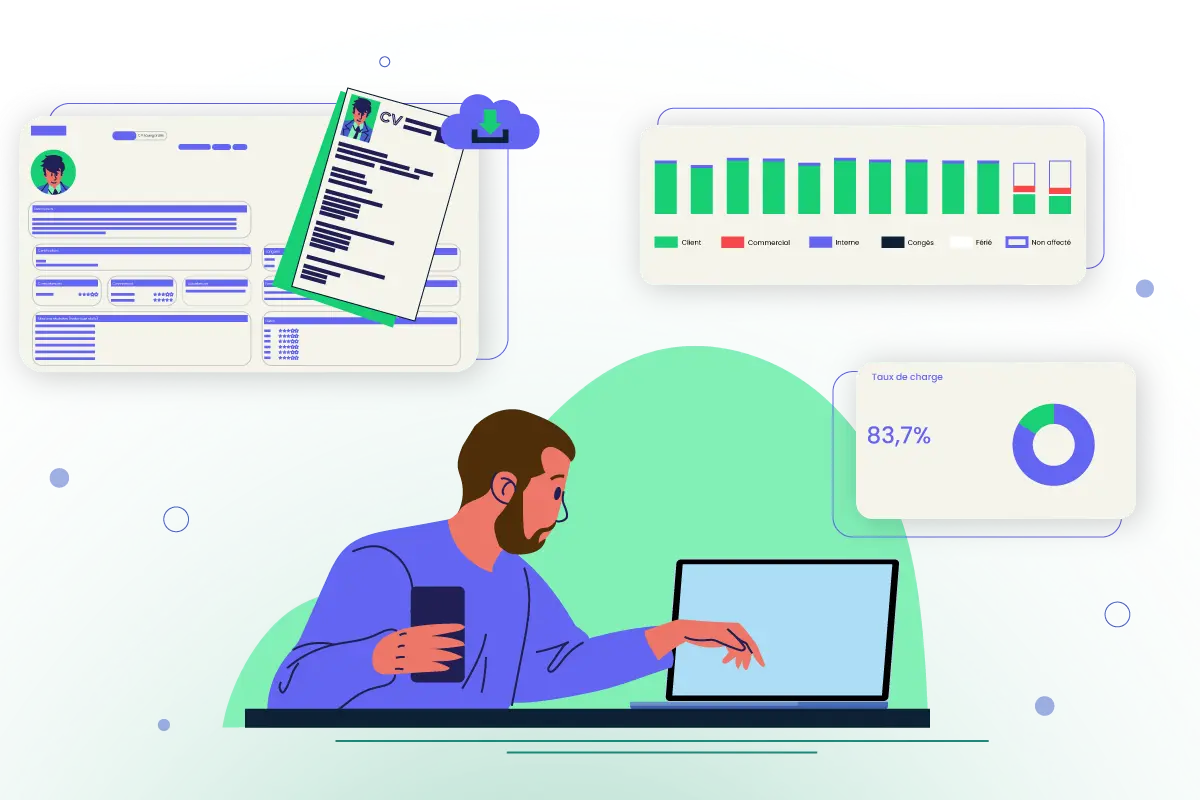10 Benefits of an Integrated Solution to Manage Your Business

When it comes to choosing the most appropriate software to manage a business, the question often arises: should you use one integrated management solution? Or several tools specifically designed for dedicated processes? In the world of consulting and services, the subject is also crucial. Monitoring activity quickly becomes complex once the 10 employee mark is reached. Monitoring customer needs, resource planning projects, time tracking and project profitability. Management of skills and evaluations, project billing, etc.
Should all these key processes be managed with separate software or with an integrated management solution? In reality, an integrated solution, as long as it is adapted to your business, brings you many advantages.
Here are 10 of them:
1. Save time!
By centralizing activity management in a single solution, you generate significant time savings for all employees. The reduction in the number of software programs allows for immediate access to information. Instead of logging into multiple solutions, in multiple browser tabs to work, the employees can access to all the data and processes in the same solution and save a lot of time in their work.
Furthermore, in a centralized solution, data is used in different places and updated in real time. There is no need to refresh pages, transfer information, or import files. All employees see their productivity increase: even the juniors who only connect to one solution to see the schedule, follow their tasks and time spent on projects, manage their expenses and vacations.
Managers can also manage their projects and teams in the same solution. Finally, administrators have all the data to automate invoicing and accounting closings.
2. The employee experience is improved
More than ever, in a war for talent that is getting stronger year after year, it is necessary to work on offering a simple and pleasant employee experience. In service and advisory activities, there is often more administrative processing than in other activities. Everyone is asked to follow the time on projects, travel expenses are sometimes more numerous, the schedule changes regularly and it is necessary to give visibility to employees.
If employees have to connect to 4 or 5 different software programs to carry out these tasks and have visibility, satisfaction will not be there. Whereas if they can do it easily, from a pleasant mobile app perfectly designed for their needs, the experience will be much better!

Stafiz is a complete tool, an ERP for service companies created specifically to manage your business. Its integrated solution allows you to manage your projects with better performance and visibility.
3. Data reliability is significantly more important in an integrated solution
A business management solution plays a key role in the financial management of a company. The data is used to calculate the turnover per period, the profitability of projects, the invoices to be issued and to prepare the accounting closing. In many cases, the data is automatically sent to an accounting solution for final processing. It is therefore imperative that the data is reliable and exhaustive so the accounting entries can be as well.
Only an integrated solution that allows you to centralize wage costs, subcontracting purchases, expenses, invoicing can make it possible to perform situation calculations and display reliable data. The link between the different processes being created from the beginning, the data is properly exploited, and there is no risk of data loss, unlike what can happen when transferring information from one software to another.
4. Project profitability analysis is more accurate
Calculating the profitability of a project is not as simple as it seems. The turnover must be calculated correctly. Its amount over the period depends on the revenue recognition methodology used. Only a dedicated tool that integrates a project accounting approach will be able to carry out this calculation. Moreover, the costs on a project are not limited to the salary costs of the time spent on the project. An accurate calculation of the profitability of projects must also include costs, especially those that cannot be rebilled. This calculation must also take into account subcontracting purchases, and any purchases of products.
Comprehensive reporting should make it possible to separate the actual turnover of the project from the turnover linked to re-invoicing (fees, purchases, subcontracting). When subcontracting, expense and purchasing management are integrated into a single business management solution, all these calculations are carried out precisely and in real time. This provides a complete and accurate view of performance and prevents management control from wasting time on these calculations.

5. Task automation is increased tenfold in an ERP for service companies
API integrations can help convey information and even automate certain tasks, but no connector has the same power as a native integration. Imagine the following possibilities offered by integrated management software;
- Automatic creation of a project based on a won opportunity
- Analyze rebillable charges and automate the preparation of expense invoices
- Automatic preparation of invoices based on time spent
- Updating the financial forecast based on the provisional schedules
- Calculation of invoice entries to be drawn up and deferred revenue
- Updating of employee capacities according to their absences
These actions are carried out in real time, without any possible errors in an integrated solution. They go further in automating tasks than a workflow created via Zapier, for example, can provide.
6. Customer data is more comprehensive for better analysis
To analyze the performance of each customer, it is not CRM that provides a complete vision. Good customer reporting requires analyzing the following data:
- Monthly revenue
- Monthly billing
- Monthly margin
- Opportunity history and statuses
- Project history and profitability
- Invoices issued and unpaid
This data makes it possible to provide a complete view of performance, and to better exploit the information for commercial purposes or for negotiations. Only an integrated activity management solution can draw from the different modules to centralize complete and more relevant reporting.
7. Projects are better anticipated, which promotes a faster start
Before a project starts, there are many steps in the pre-sales phase: response to the call for tenders, positioning of profiles and pre-sales.resource planningContracting. If your ERP/CRM software allows you to manage this information, it makes it easier to anticipate. Knowing when to pre-book certain resources, knowing the needs of skills that tend to be more in demand, which contracts are signed or not.
With this information, managers can better anticipate next steps and ensure that everything is done to start the project as soon as possible. This organization promotes customer satisfaction and of course promotes cash flow.

8. A central solution creates a common language and better collaboration of teams around performance
In most companies, sales people work with their CRM. The finance department is the only one to have access to the accounting and invoicing solution, while the HR teams have access to information via their HRIS. With this type of organization, barriers are created, it is difficult for information to flow between departments and collaboration is non-existent. Performance objectives remain focused department by department. There is no holistic vision or collaboration to move forward together towards the company's goals.
However, when a company uses an integrated management solution, centralization brings the advantage of allowing each department to find important information. Of course, sales representatives can continue to manage sales activity in the CRM, and HR can continue to track employee information in the HRIS software. With the right connectors, data that is interesting to share is sent to the central management tool, and all employees can benefit from a more holistic view.
- Opportunities are updated from the CRM. But the calculation of the forecast margin and the forecastresource planning is done in the activity management solution
- New employees are created in the HRIS software but feed into the central solution for managing the activity, and can then be staffed on projects
- The invoices issued in the integrated management solution will be sent automatically to the accounting tool
Thus, an integrated management solution does not detract from the performance of each department. It helps to provide a more complete view, and to allow teams to collaborate by having a common view of the performance of the activity.
9. The reduction in the number of software programs used or their scope allows for significant financial gains
In an era where software has become so important to businesses, software solution stacks can become so large that the associated costs become astronomical. There are obvious financial gains to be made by centralizing solutions. While it is impossible to keep a single solution to perform all your processes, it is possible to centralize the following functionalities on the business management part: opportunities and budget management, recruitment management, capacity and load management, absence management, project time tracking, expense management, billing management, and reporting.
In addition, a marketing automation tool can be added, as well as payroll and accounting tools. With this kind of organization, the number of licenses decreases drastically and the overall cost for the company as well. Even if the license of the management tool is higher, it will never be as high as the sum of the licenses of all the tools it replaces. And yet nothing is lost in terms of performance, quite the contrary.
10. Avoid connector maintenance and contractual complexity
The choice to use multiple tools to manage the business requires the development of many connectors to simplify the daily routine. If the solution can be used to carry out the desired tasks, it is necessary to expect recurring problems of maintenance of the API connectors. Indeed, as soon as a change occurs on one side or the other of the connector, the action is no longer performed.
You need to constantly track interruptions and have a designated person with the technical background to update the code behind the API connection and get it working again.
This can be expensive in some cases and makes the updating process tedious and inflexible. This is a situation that does not exist in an integrated solution. Connections are native, and there can be no connection problems (apart from a bug that would be fixed very quickly). The maintenance is scalable and the improvements of the solution do not disturb the links between the different processes and the automation.
Thus, the use of an integrated business management solution is a solution that has many advantages. However, for the experience to live up to expectations, you must of course choose a solution adapted to your business.
Make sure that customers' use cases match yours. In addition, you should still understand the purpose and specialty of the integrated solution.
It is very possible that it perfectly covers 80% of your needs, but that the remaining 20% requires one or more dedicated solutions. The API connection makes sense in this case, as their number is small, and it is likely that they are already offered natively.

